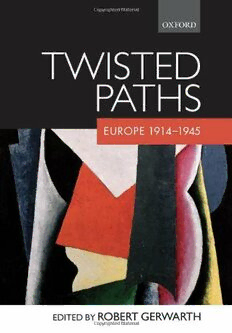
Twisted Paths: Europe 1914-1945 PDF
442 Pages·2007·6.366 MB·English
Most books are stored in the elastic cloud where traffic is expensive. For this reason, we have a limit on daily download.
Preview Twisted Paths: Europe 1914-1945
Description:
A concise introduction to European history between 1914 and 1945, this series of succinct interpretations written by leading scholars offers a new introduction to the period. Covering historical developments in all areas within Europe's natural borders--from the Atlantic to the Arctic Ocean, from the Bosporus to the Urals and the Mediterranean, the book moves beyond the traditional view that the history of this period can only be understood in terms of catastrophe. Instead it argues for a more balanced perspective, suggesting that both "darker" and "lighter" elements in Europe's history were capable of evolving simultaneously. Without neglecting the more familiar stories of war, genocide, and economic depression, each chapter demonstrates that political stability and regime collapse, social progress and mass poverty, the crisis of European civilization and remarkable cultural achievements, existed alongside each other. With the military struggles and intense political conflicts also came innovations in social welfare, the introduction of far-reaching labor laws, the breakthrough of parliamentary democracy and republicanism, and the enduring personal networks that resulted from international migration.Emphasizing the histories of the smaller states--and the multifaceted nature of the period--Twisted Paths illuminates the diversity of Europe's experiences in the first half of the twentieth century.
See more
The list of books you might like
Most books are stored in the elastic cloud where traffic is expensive. For this reason, we have a limit on daily download.
